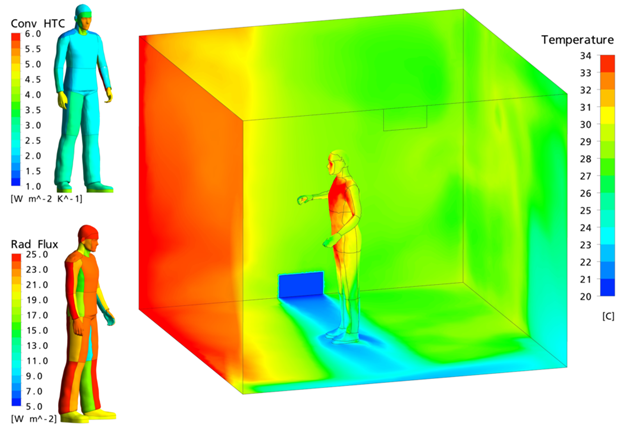Computer simulation of the human thermoregulatory system has been a valuable research tool contributing to the deeper understanding of the principles of human thermoregulation. In the built environment, it is very important to use the knowledge on human thermal comfort to aid building designs. Modelling of the human body has found many applications in this field.
We are the developers of a detailed mathematical model of human thermoregulation and thermal comfort. This model is based on the well-recognized IESD-Fiala model originally developed at the IESD, De Montfort University. The Fiala model has been used in medical engineering to predict temperature and regulatory responses of anaesthetised patients, in the car industry to predict passengers' responses to the transient and asymmetric boundary conditions found inside car cabins, and in meteorology to quantify human physiological and comfort responses to outdoor weather conditions.
With the detailed human model, it is possible to conduct in-depth thermal comfort analysis of the transient environments in buildings, taking into account of the environmental condition and the occupants' behaviour. The human model can also be coupled with CFD analysis for studying heterogeneous comfort conditions present in special spaces or provided by novel HVAC technologies.











